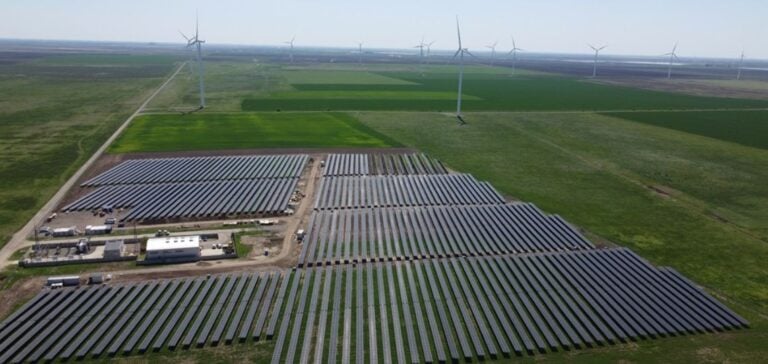ENGIE Romania adds a new dimension to its renewable energy portfolio with the commissioning of its first hybrid power plant in Gemenele, Brăila County.
This facility combines wind and solar capacities, with a total output of 57 MW.
It comprises an existing 47.5 MW wind farm and a new 9.3 MWp solar farm.
The initiative is part of a strategy to maximize green production while meeting the efficiency and management challenges of generating electricity from intermittent sources.
The solar park, developed on a 14-hectare site, is equipped with 17,100 bi-facial photovoltaic panels, installed on tracker-type structures.
These structures follow the position of the sun, maximizing energy production throughout the day.
The combination of these technologies stabilizes the supply of renewable energy and optimizes operating costs, while helping to reduce CO2 emissions by around 49 kilotonnes a year.
Connected infrastructure for greater efficiency
The integration of this hybrid power plant into the local electricity grid means that Romania’s energy needs can be met more efficiently.
Connecting the wind farm and solar farm to the same distribution infrastructure optimizes the balance between production and demand, a key challenge for renewable energy operators.
This approach improves grid stability by providing a more constant and predictable source of generation, which is essential in the context of the energy transition.
Cristian Buzan, Deputy Managing Director ofENGIE Romania, underlines the importance of this innovation for the company and its customers.
The hybrid power plant represents a strategic lever for offering long-term renewable electricity purchase contracts, enabling corporate customers to better manage their energy costs while meeting their sustainability objectives.
Ongoing investment in renewable energies
ENGIE Romania, already active in renewable energies with an installed capacity of 178 MW for wind and 33 MW for solar, continues to expand its green footprint.
The company operates three wind farms in the counties of Brăila, Constanța and Galați, and five solar farms in the counties of Arad, Buzău, Harghita and Teleorman.
This portfolio diversification is crucial to meeting European targets for reducing greenhouse gas emissions and supporting Romania’s energy transition.
In 2023, ENGIE Romania also launched the construction of a new greenfield solar power plant in Ariceștii Rahtivani, Prahova County, with a capacity of 37.2 MWp.
These projects illustrate the company’s determination to continue investing in sustainable infrastructures that promote green energy production.
Outlook and market implications
The Gemenele hybrid power plant is part of a wider industry trend towards multi-source installations.
These projects offer greater flexibility in energy management, making it possible to respond to variations in demand and reduce dependence on fossil fuels.
For ENGIE Romania, these investments confirm a strategy focused on technological innovation and diversification of energy sources, aimed at positioning the company as a key player in the Romanian energy landscape.
The growing interest in hybrid power plants is also reflected in the market’s response to regulatory pressures and the European Union’s climate objectives.
Combining wind and solar farms enables infrastructure optimization and better cost management, while guaranteeing a stable and sustainable energy supply.
ENGIE Romania continues to focus on innovative projects to meet growing energy needs and support the transition to cleaner energy sources.
These initiatives, such as the Gemenele hybrid power plant, are concrete examples of how the industry can evolve to meet environmental challenges and ever-changing demand.






















